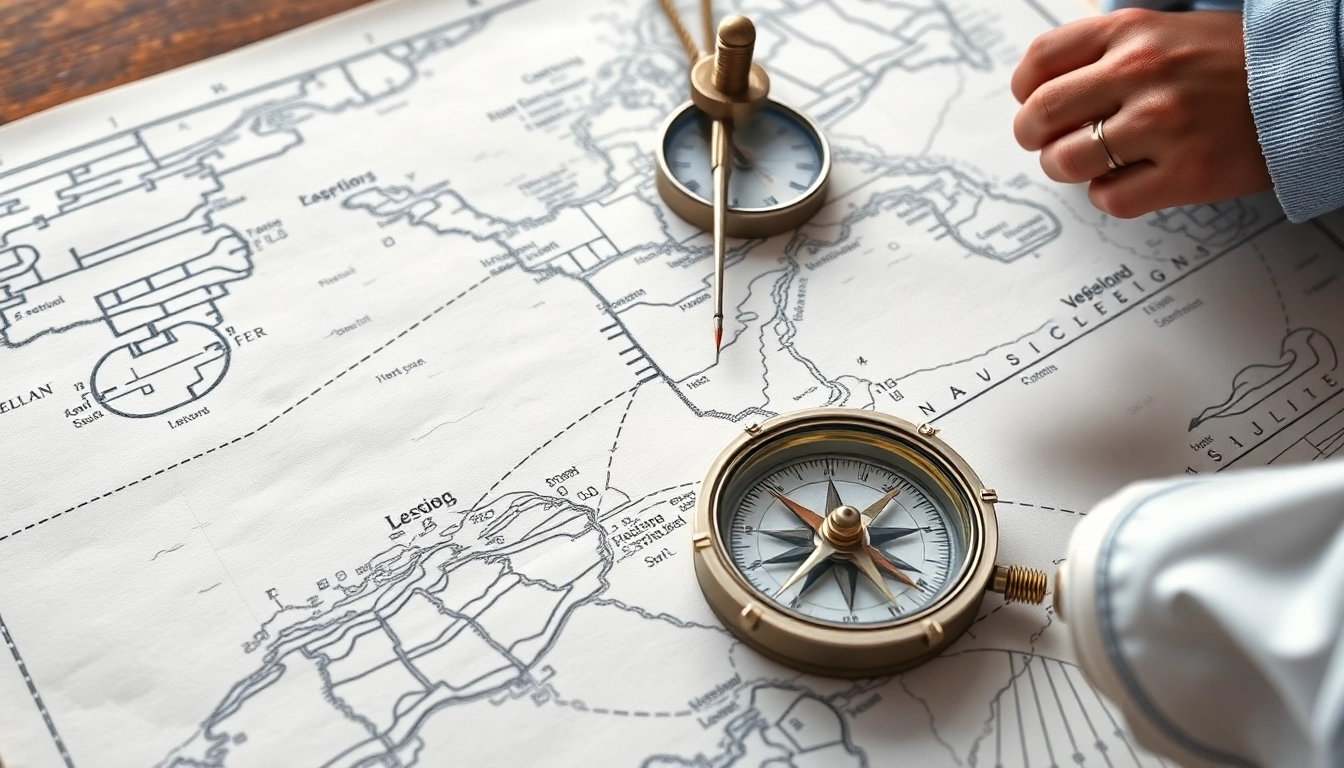Mastering Boat Sailing: Precise Navigation Techniques for Safe Water Journeys
Introduction to Boat Sailing: Fundamentals and Significance
Navigating a boat effectively requires a combination of traditional skills and modern technologies. Among these, Boots Versegelung plays a crucial role in ensuring safe and accurate water travel. Understanding the principles of boat sailing, especially the science of sailing and navigation, is fundamental for both amateur and professional sailors. Whether sailing on calm lakes or tackling open seas, mastering these techniques enhances safety, efficiency, and enjoyment.
Historically, navigation was predominantly based on natural signs and manual calculations. Today, these methods are complemented and sometimes replaced by electronic aids, but the core principles remain vital. Recognizing the evolution from rudimentary compass use to sophisticated GPS systems underscores the importance of a comprehensive knowledge base for effective boat navigation.
Techniques and Tools for Effective Boat Sailing
Optimizing Peilung (Bearing) and Standlinien (Position Lines)
At the heart of precise navigation lies the art of taking accurate bearings and plotting standlinien. Peilung involves measuring the angle between the boat’s current position and a known landmark, which is crucial for establishing your position on the water. For optimal results, use high-quality tools such as the BCC Polierpuck extra weich 90mm or BCC Polierschwamm Waffelpad schwarz 150mm soft to maintain your equipment. Ensuring your tools are calibrated correctly minimizes errors caused by equipment wear or environmental factors.
Standlinien serve as reference points, drawn on nautical charts, representing lines along which the boat could be located based on a bearing. Accurately drawing and interpreting these lines enables sailors to determine their position relative to known points. Combining multiple standlinien from different landmarks increases localization accuracy, an essential skill in complex navigation scenarios.
Mathematical Calculations and Corrections
Precise navigation involves applying mathematical calculations to bearings and distances to refine position estimates. Techniques such as the intercept method, where bearing angles are compared against charted landmarks, are fundamental. Adjustments for magnetic declination and local variations are necessary, which can be facilitated by tools like the BCC Power Sealer to protect sensitive electronic equipment and multipurpose tools like the BCC Microfaser Towel 3er Pack for quick data cleaning.
Advanced sailors utilize software and calculators to perform real-time corrections, but a solid understanding of manual calculations forms the backbone of reliable navigation. Continuous practice in making these adjustments ensures preparedness for challenging conditions.
Combining GPS with Traditional Navigation Methods
While GPS technology provides real-time positioning, integrating it with traditional techniques offers a redundant safety net. GPS can be supplemented with compass bearings, celestial navigation, and dead reckoning to verify and cross-check data. For instance, using the BCC Snow Foam Gun to clean and maintain sensors ensures accurate readings. Embracing both methods enhances overall navigation reliability, especially in environments where electronic systems might fail.
Practical Tips to Optimize Boat Sailing
Preparation for Navigation Cruises
Effective navigation begins well before departure. Prepare detailed charts and mark known landmarks. Ensure all equipment, including compasses, bearing devices, and electronic aid systems like GPS or AIS, are calibrated and functioning properly. Stock essential supplies like the BCC Towels Vorteilspack for quick cleanups and data adjustments.
Visualize your planned route, identify potential hazards, and set safety benchmarks. Establish clear communication protocols with crew members, and conduct briefings on procedures for taking bearings and recording data accurately.
Recognizing and Avoiding Common Errors
Human error, environmental influences, and equipment malfunctions are typical challenges. Misreading bearings, neglecting to account for magnetic declination, or misinterpreting chart data can lead to inaccuracies. Regular calibration of instruments like the BCC Polierpuck extra weich 90mm and careful attention to environmental conditions—such as currents, wind, and visibility—are vital. Using high-quality cleaning and maintenance tools, like the BCC Microfaser Towel 3er Pack, helps maintain data accuracy by preventing equipment contamination.
Fine-tuning During the Voyage
Continuous assessment and adjustment are critical. When close to landmarks, verify bearing consistency. Use a BCC Power Cleaner 1L to keep sensors and equipment free of dirt and salt buildup. Adjust your course based on updated standlinien and environmental feedback. Being adaptable and vigilant ensures precision even in changing conditions.
Common Challenges and Solutions
Counteracting Poor Visibility
Fog, rain, or darkness hinder visual identification of landmarks, complicating the peilung process. Rely on electronic aids like GPS but verify with dead reckoning and compass readings. In such conditions, ensure your electronic tools are protected, possibly employing waterproof cleaning products such as the BCC Power Sealer for device longevity.
Measuring in Moving Water
Currents and waves influence bearings and standlinien. To minimize errors, correct measurements by accounting for current direction and speed, often available via environmental sensors or navigational charts. Practice applying corrections with tools like the BCC Power Polish to smooth surfaces for clearer sensor readings.
Leveraging Technological Support
Modern navigation supports include integrated systems like AIS and radar, which should be used unison with traditional methods. Regularly update software and maintain equipment with supplies such as the GLORIA FoamMaster FM 10 Schaumsprüher for cleaning foam that keeps sensors debris-free. Training your crew on these systems maximizes safety and accuracy.
Advanced Concepts and Techniques in Boat Sailing
Interpreting and Adapting Standlinien
Interpreting standlinien involves understanding how environmental factors can shift the perceived position. Correct for local conditions like tide or current, and employ iterative navigation techniques—taking multiple bearings and comparing results. Using high-quality tools like the BCC Polierpuck konkav extra weich ensures precise chart work.
Peiling Farthest Objects Accurately
Accurate peilung of distant landmarks can improve positional accuracy. Use long-range binoculars, such as the BCC Orange Towel for maintenance, and ensure your bearing aligns with chart markers. Cross-reference with celestial navigation when possible for calibration.
Integrating Standlinien into Overall Navigation
Combining standlinien with other data sources creates a layered navigation strategy. For example, use electronic GPS for general positioning, then refine with visual bearings obtained through meticulously maintained tools. Regular updates and validation of data through physical and electronic means improve overall safety.

